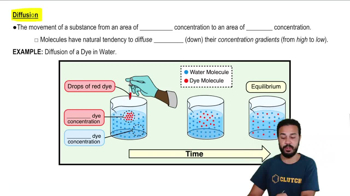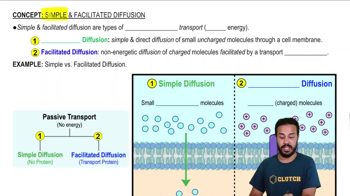Multiple Choice
Which of the following membrane movements is not a passive process?
127
views
 Verified step by step guidance
Verified step by step guidance Verified video answer for a similar problem:
Verified video answer for a similar problem:



 5:05m
5:05mMaster Passive vs. Active Transport with a bite sized video explanation from Bruce Bryan
Start learning